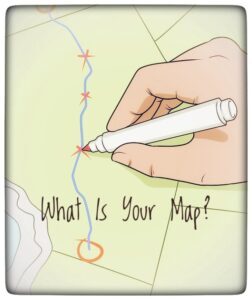What Is Your Map To Navigate The New World?
 Imagine the church in 1880. Edison’s light bulb was one year old and the telephone was four years old. Letters were written by hand, and for quick communication, telegram was sent. There was no radio, television, computers, email, cars, or aero plane.
Imagine the church in 1880. Edison’s light bulb was one year old and the telephone was four years old. Letters were written by hand, and for quick communication, telegram was sent. There was no radio, television, computers, email, cars, or aero plane.
1844: Samuel F.B. Morse electrically transmitted the message “What hath God wrought?” When U.S. Congress had voted on whether to invest USD30,000 for an experimental line between Washington and Baltimore, 83 voted against it. Seventy did not vote “to avoid the responsibility of spending public money for a machine they did not understand.” An article in the New York Times, in 1852, described telegraphy as “the highway of thought.”
1860: Every bride wanted her photograph taken. Back then, photography required a heavy camera, elaborate preparation, and it took a long time before clicking the picture.
Mid-1880s: George Eastman, the founder of Kodak, had substituted the heavy glass plates with a thin cellulose film. Eastman Kodak had 89 percent of market share in the United States by 1976. Apple’s ad in 2013 stated, “Everyday, more photos are taken with iPhone than any other camera.”
1885: Ottmar Mergenthaler developed the linotype typeset. He introduced a keyboard mechanism that assembled the letters and aligned them in a row. Old craftsmen resisted the change. Despite the opposition, typesetters became “standard” by 1890.
Modern management founder and author of 39 books, Peter Drucker describes it this way: “Every few hundred years throughout Western history, a sharp transformation has occurred. In a matter of decades, society altogether rearranges itself – its worldview, its arts, and its key institution. Fifty years later, a new world exists. And the people born into that world cannot even imagine the world in which grandparents lived and into which their own parents were born.”
Over a century ago, churches were location-based. The advent of photographs, radio, television, the internet, and social channels radically changed the way churches operate. Technology keeps changing. Process has changed. Theology and principles remain the same. The leader today must be creative without losing sight of God.
A cliché states, “If Moses had a map, he wouldn’t have wandered for forty years.” A church leader needs a strategic roadmap to navigate the current pace of change. What is yours?



